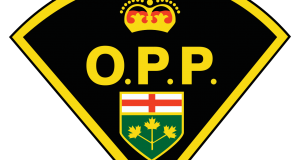The Ontario government, in consultation with the Chief Medical Officer of Health, local medical officers of health, and other health experts, is moving three public health regions to new levels with stronger public health measures as set out in the Keeping Ontario Safe and Open Framework. These steps are being taken to stop the spread of COVID-19 in order to keep schools open, safeguard health system capacity, and protect the province’s most vulnerable populations.
“Over the last seven days we have seen the trends in key public health indicators continue to go in the wrong direction in these three regions,” said Christine Elliott, Deputy Premier and Minister of Health. “By taking proactive action and moving these regions to a higher level in the framework, we are helping them to reduce transmission in the community and avoid broader closures. The health and well-being of Ontarians remains our top priority.”
Based on the latest data, the following public health regions will move from their current level in the framework to the following levels effective Monday, December 7, 2020 at 12:01 a.m.:
- Orange-Restrict
- Middlesex-London Health Unit; and
- Thunder Bay District Health Unit.
- Yellow-Protect
- Haliburton, Kawartha, Pine Ridge District Health Unit.
All other public health regions will remain at their current level. Please visit Ontario.ca/covidresponse for the full list of public health region classifications.
For long-term care homes, visitor restrictions apply to those homes in the public health unit regions that are in the Orange-Restrict level or higher. In addition, long-term care homes must implement recently enhanced testing requirements.
Trends in public health data will continue to be reviewed weekly to determine if public health units should stay where they are or be moved into a higher level. Public health units will stay in their level for a minimum of 28 days, or two COVID-19 incubation periods, at which time, the government will assess the impact of public health measures to determine if the public health unit should stay where they are or be moved to a different level. The Ministry of Health will continue to consult regularly with local medical officers of health on local context and conditions to help inform the classification of their public health unit region.
All Ontarians should avoid close contact with anyone not living in the same household. People who live alone may have exclusive close contact with one additional household to prevent feelings of isolation and mitigate against negative mental health impacts. Ontarians should also follow all required public health measures, and public health advice, as we approach the holiday season.
No matter where you live in the province, the safest way to spend the holidays this year is by only celebrating in person with the people you live with and celebrating virtually with everyone else. People who live alone may have exclusive close contact with one additional household.
“As we continue in our fight against the second wave of COVID-19 and begin preparing for the holiday season, it remains crucial for all Ontarians to continue following public health measures and advice,” said Dr. David Williams, Chief Medical Officer of Health. “By limiting close contact to those who you live with and by adhering to public event and social gathering limits, we can once again bend the curve and prevent the need for further restrictions.”
The following recommendations apply to all public health unit regions in the province:
- Stay home if you have COVID-19 symptoms, even if they are mild;
- Maintain two metres of physical distancing from everyone else;
- Avoid social gatherings and limit close contacts to your household or the people you live with;
- Adhere to the restrictions in your region on public and private gatherings;
- Wear a face covering indoors and wear one outdoors if physical distancing may not be maintained or if wearing one is required;
- Wash your hands thoroughly and regularly;
- Cover your cough;
- Get tested if you have symptoms compatible with COVID-19, or if you’ve been advised of exposure by your local public health unit or through the COVID Alert mobile app;
- Individuals and families from higher transmission regions should avoid travel to lower transmission regions, except for essential reasons; and
- Download the COVID Alert mobile app.
 Wawa-news.com You can't hear the 'big picture'!
Wawa-news.com You can't hear the 'big picture'!


